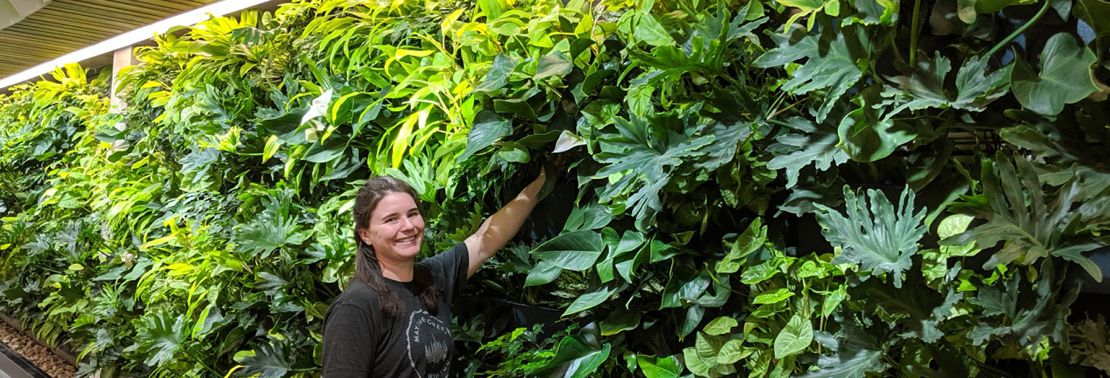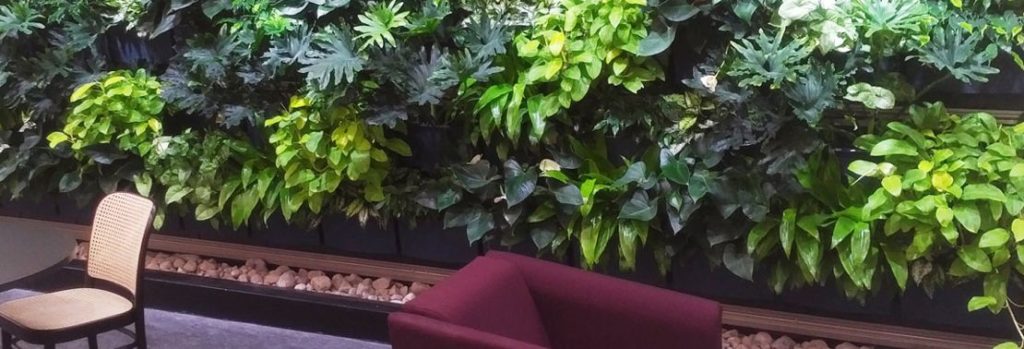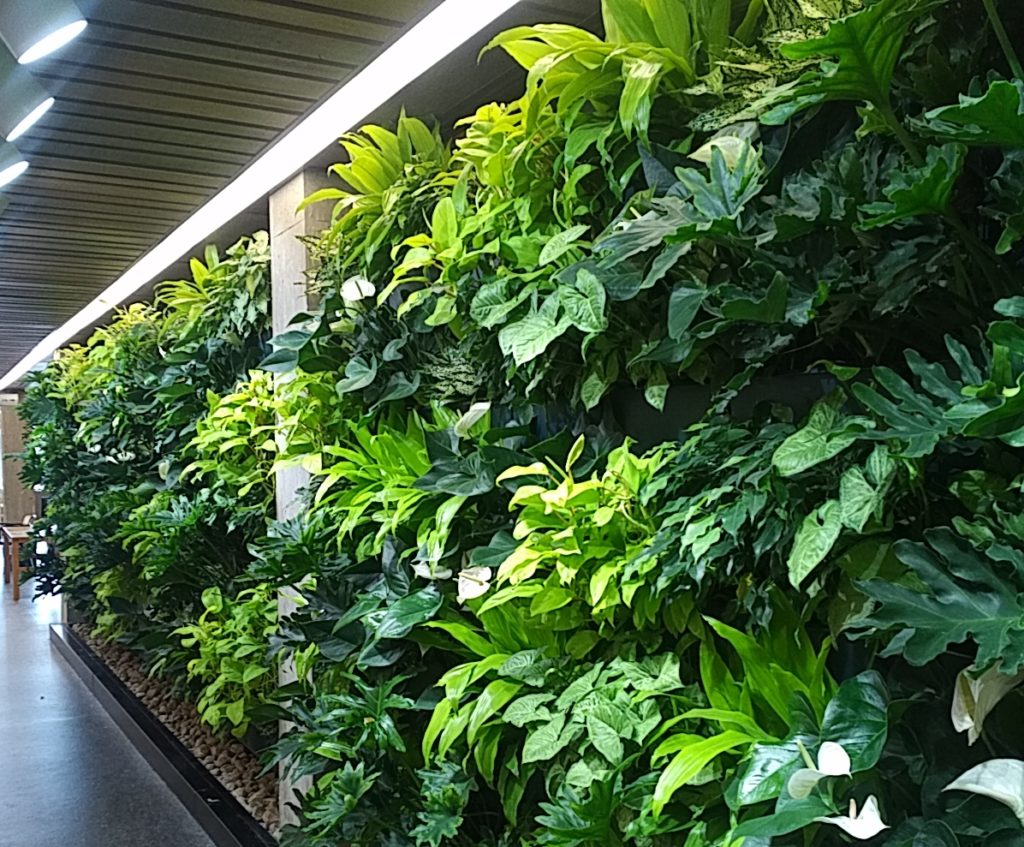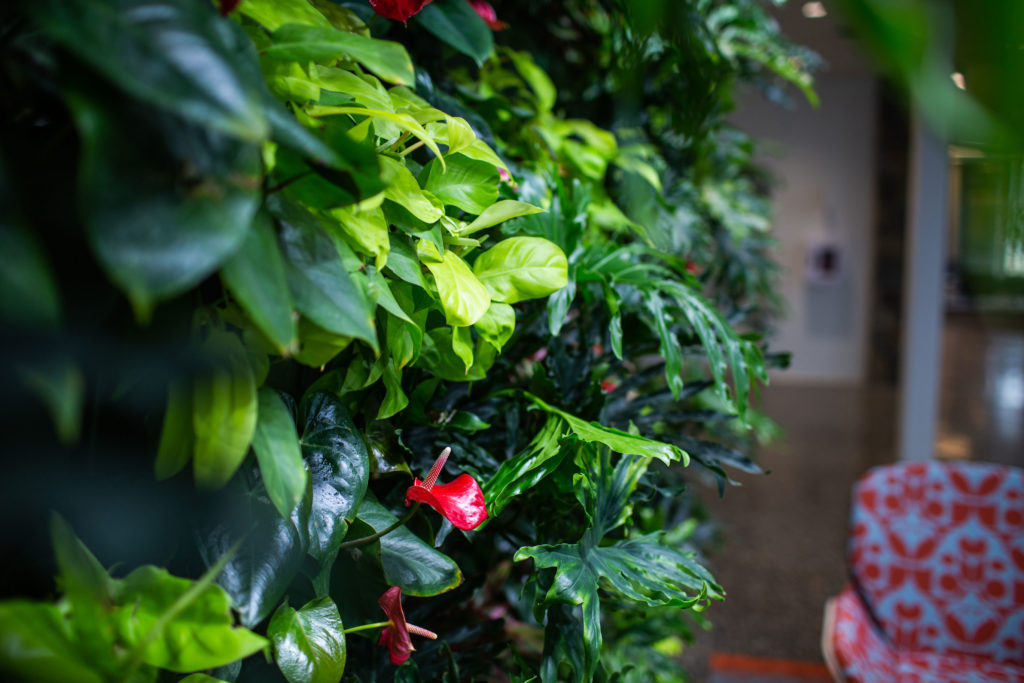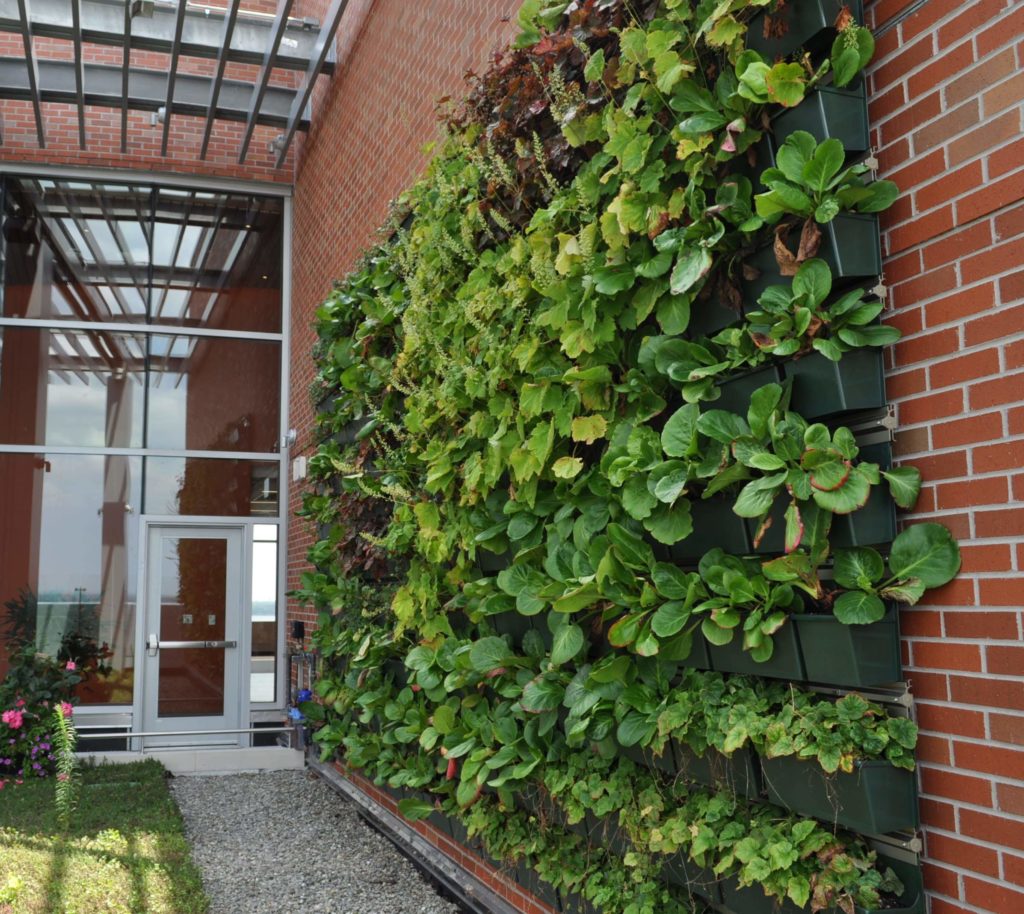LiveWall® Indoor Living Wall Symbolizes and Celebrates the Bata Library’s Connection to Nature and the Outdoors at Trent University
Modernizing a historic building is always a challenge. It is all the more daunting when the building in question is considered to be a prized treasure in a nation’s architectural heritage. Such was the case for Perkins + Will, the architecture and design firm in charge of the $18.8 million transformation of the renowned Bata Library, the architectural and academic heart of Trent University in Peterborough, Ontario.
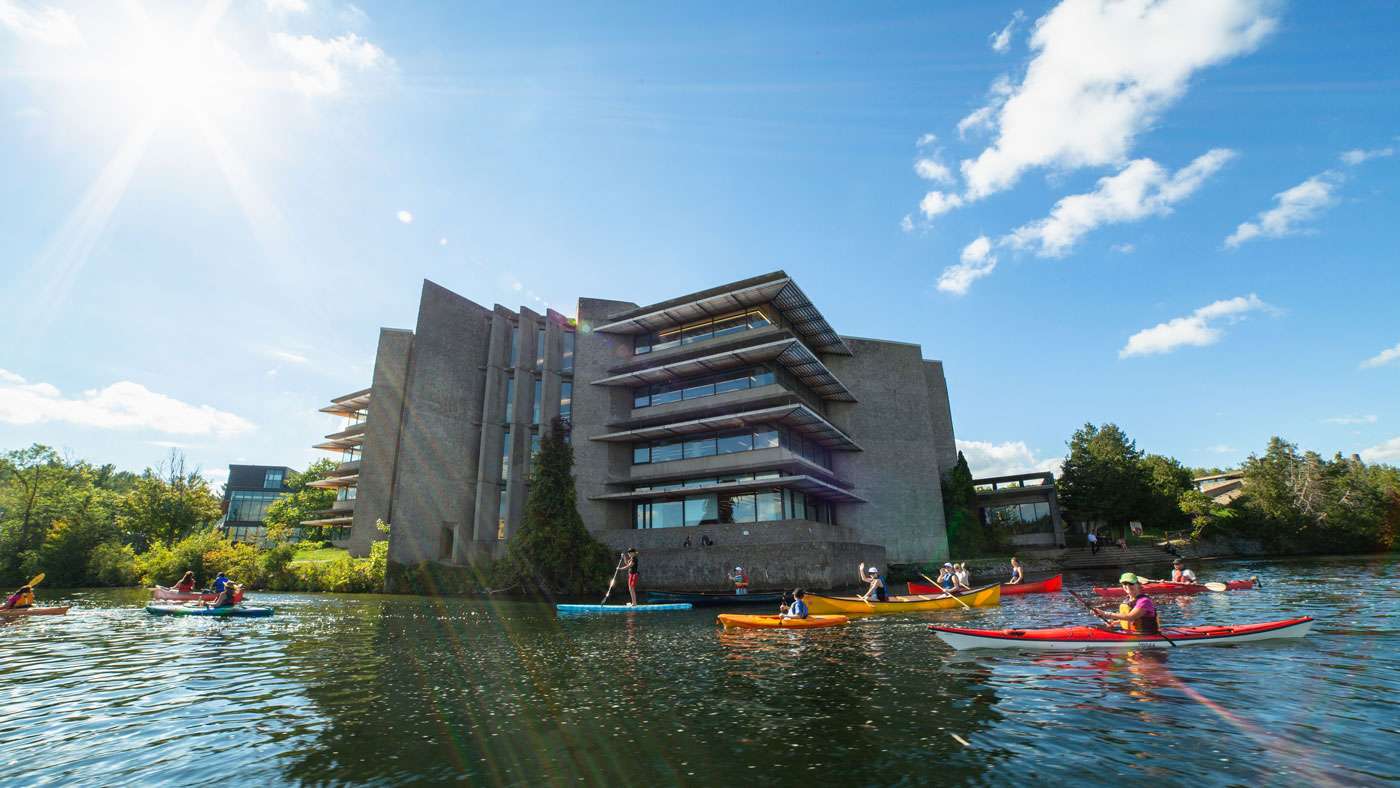
Image: LiveWall
The Bata Library was constructed in 1967. As a traditional library of that era, it was designed to house the stacks for displaying half a million books and publications, provide ample space for extensive card catalogs, and offer quiet areas for solitary studying. “The University endeavored to re-imagine the library for how students access information and how they work today,” said Shelley Strain, LEED-AP, GRP, sustainability coordinator, Trent University Facilities Management. “It needed a re-design that would support digital access to information and create inviting spaces where students can gather and work together.”
“Our challenge was to respect, preserve and enhance the historically-significant building, which was designed by one of Canada’s most celebrated architects, while meeting the contemporary requirements for digital infrastructure and more open, flexible spaces that invite students to connect and collaborate.” ~ James Mallinson, B.Arch., OAA, LEED AP, project architect, Perkins + Will

Image: LiveWall
A 278-square-foot (26-square-meter) living wall, installed in the library’s atrium with the LiveWall® Indoor Living Wall System, is an essential design element in the Perkins + Will plan.
Fidelity to the Design Heritage
The Bata Library is a prominent landmark on the Trent University campus, which was designed by Ronald Thom (1923-1986), an extraordinarily influential Canadian architect. His work reflected the harmony with nature characteristic of Frank Lloyd Wright’s Prairie style while incorporating the modern sensibility and simplicity of the Bauhaus movement.
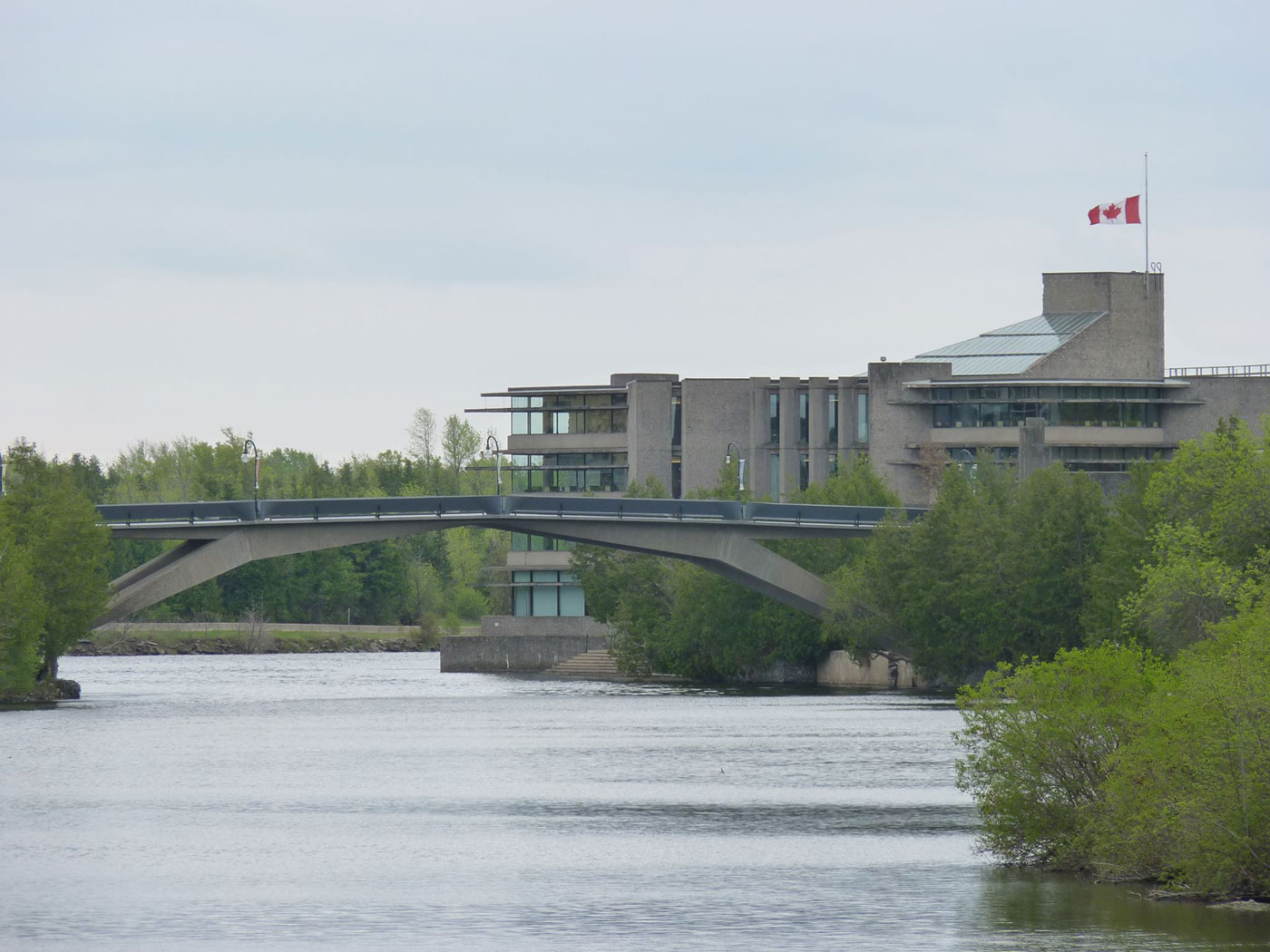
Image: Trent University Facebook
The Trent University campus is a splendid example of conceptual architecture that respects location. Thom envisioned the campus buildings, constructed on the west and east banks of the Ontonabee River, as growing out of the picturesque landscape on the site’s 1,400 acre campus. The window-walled Bata Library appears to rise up from the river, and the atrium’s skylight brings natural daylight streaming into the interior.
“Thom strove for excellent design that harmonizes with natural settings and natural beauty,” said Dr. Leo Groarke, PhD, president and vice-chancellor, Trent University. “Featuring a living wall in the re-design of the Bata Library is a wonderful way to honor this legacy.”
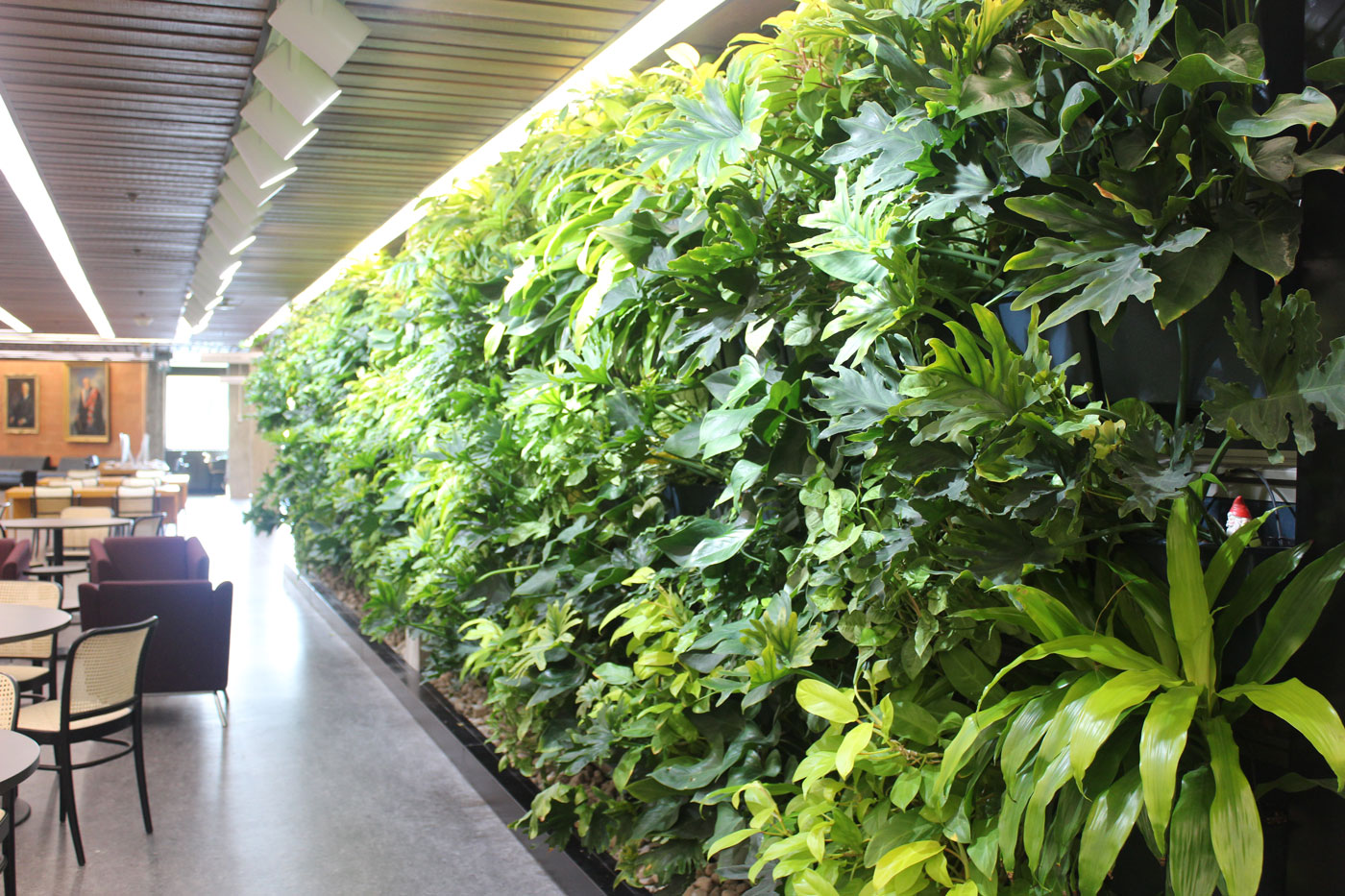
Image: Ginkgo Sustainability
“The library has always celebrated Trent University’s vital connection to nature and the outdoors,” said Strain. “The living wall symbolizes and strengthens this connection.”
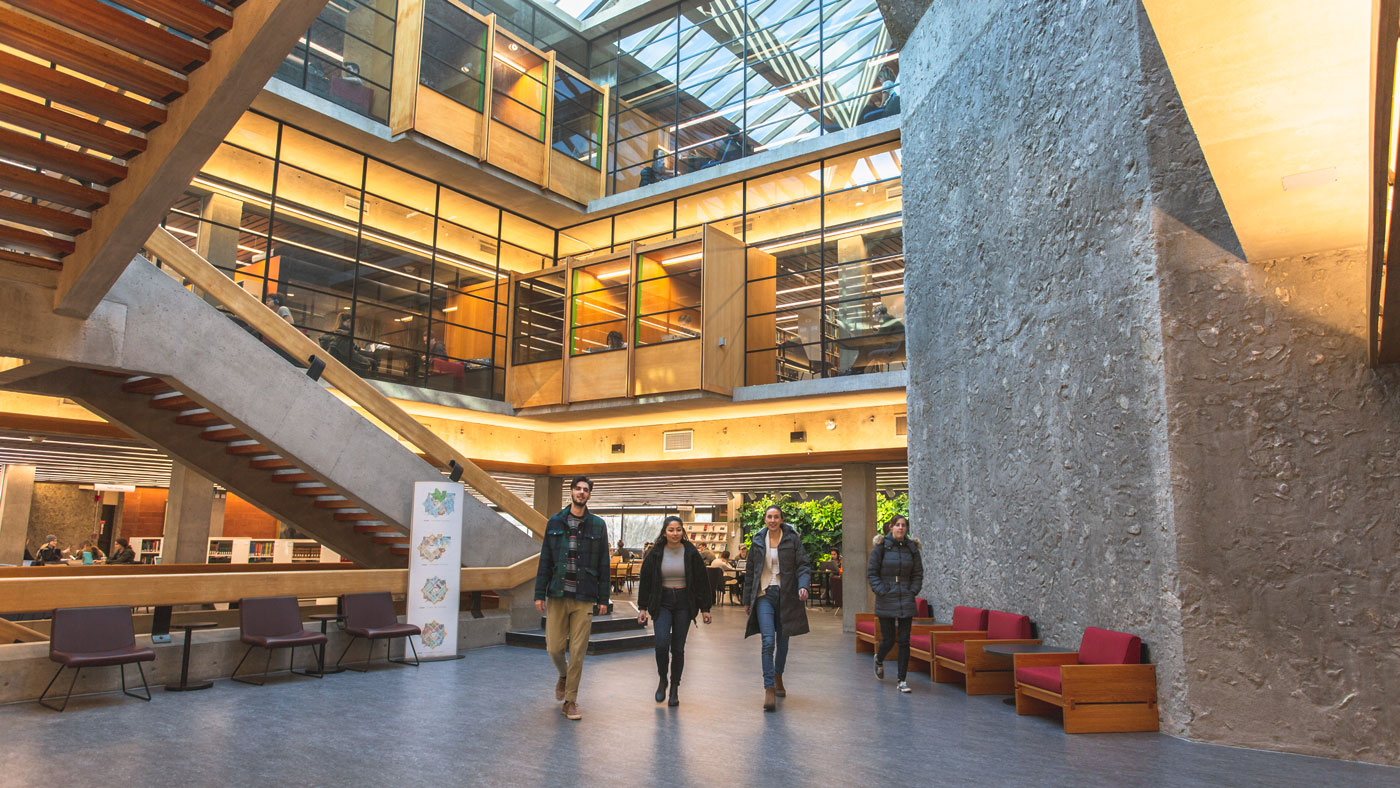
Image: LiveWall
In addition, Trent University has a long-standing reputation for its commitment to a green campus. However, many of the critical elements of sustainability, such as energy retrofits, are not visible to students. A green wall at the center of the library would help the community make a connection to the University’s green initiatives.
Living Wall Installation
Completed in October 2018, the Bata Library green wall is almost 7 feet (two meters) in height and was constructed in two side-by-side sections each 20 feet (six meters) in length. It totals 278 square feet (26 square meters).
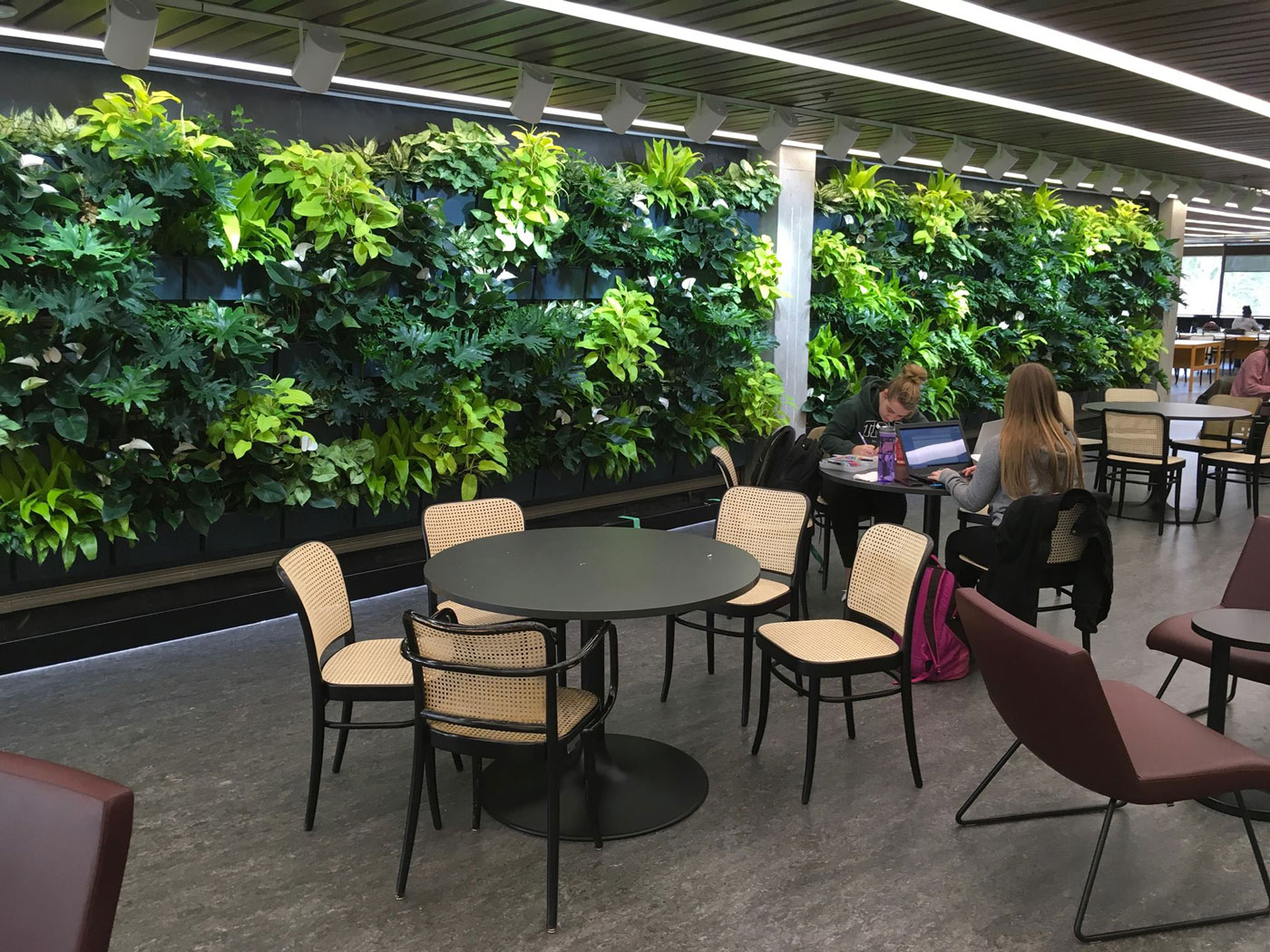
Image: Trent University Facebook
“The living wall is recessed between existing concrete pillars in the atrium,” said Mallinson. “It connects two adjacent seating areas to create an inviting open space, softens the center of the library’s interior, and complements the tone of the cedar ceilings.”
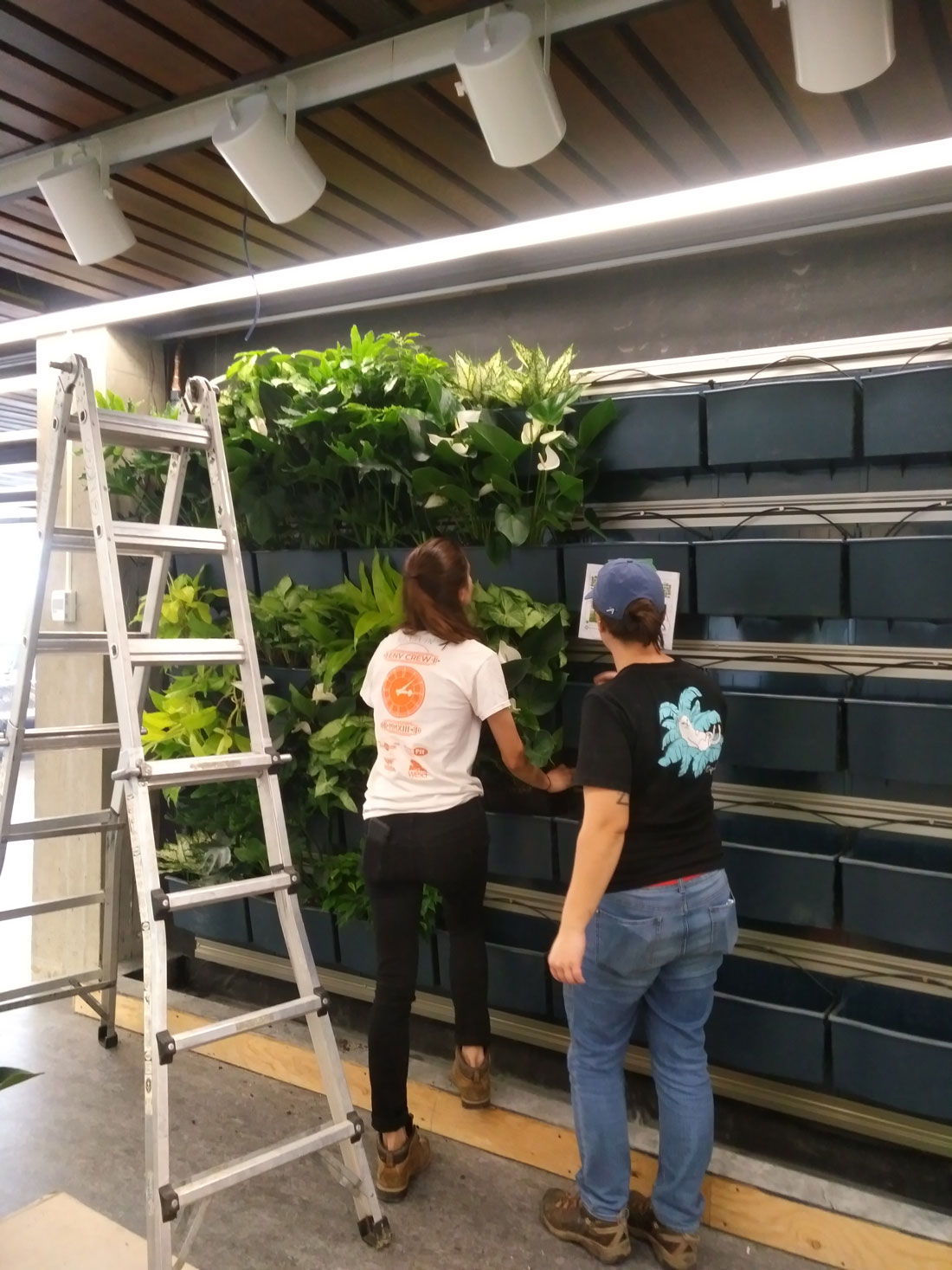
Image: Ginkgo Sustainability
The LiveWall® Indoor Living Wall System was selected for the project. It is a modular system that establishes a “vertical garden” mounted onto walls. In the typical indoor installation, its vertical furring tracks are attached onto the surface of a wall protected by a waterproof membrane. Horizontal aluminum rails, which include conduits to bring water to the system’s integrated irrigation components, are bolted to the tracks. LiveWall modular planter boxes, which are high-impact, UV-resistant, architectural quality moldings, slide into the rails along a specially designed slot. Finally, separate liner inserts, which are removable and reusable plant containers that hold the growing medium and pre-grown nursery plants, are dropped into the planter boxes.
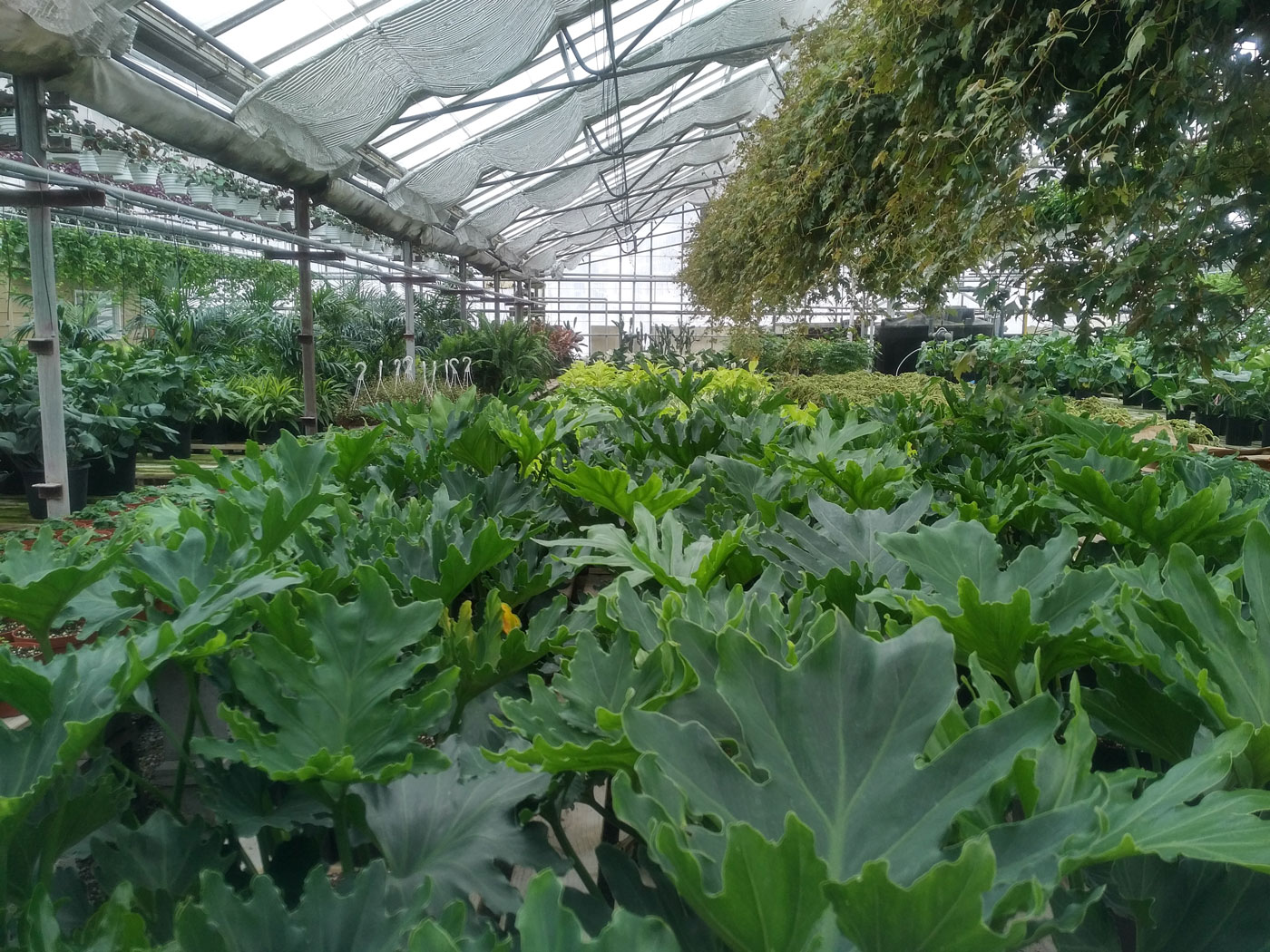
Image: Ginkgo Sustainability; pre-growing at nursery
The Bata Library living wall includes 150 LiveWall modular planters manufactured in a bluestone color. The irrigation system uses drip stake assemblies, which inject water and fertilizer into the growing medium. The light fixtures for the green wall plants are equipped with LiveWall Norb® (Nutri-Orb) bulbs, a specialized white-light LED grow bulb that provides the light spectrum and light nutrition plants need for healthy growth while giving off a pleasant white light similar to regular indoor lighting.
Plant Selection
“For a green wall, plant diversity with multiple species is just as important as it is on a green roof,” said Dave MacKenzie, horticulturalist and president of LiveWall. “Whether for an indoor or outdoor living wall, plant selection is always a critical success factor.”

Image: LiveWall
Trent intended the wall to be well-light during all hours when the library is open. The installation required plants not easily light stressed by near constant lighting. Species that can tolerate slightly dry conditions between watering would also do better in the bright atrium.
“The plant palette features seven tropical species with similar light and water requirements,” said Sasha Liston, sales manager and research and development lead, Ginkgo Sustainability (Toronto, Ont.), the green infrastructure specialists responsible for installing and maintaining the living wall. “The organic design mixes 380 plants, including both upright and billowing species that have a variety of leaf shapes, variegation and textures.”
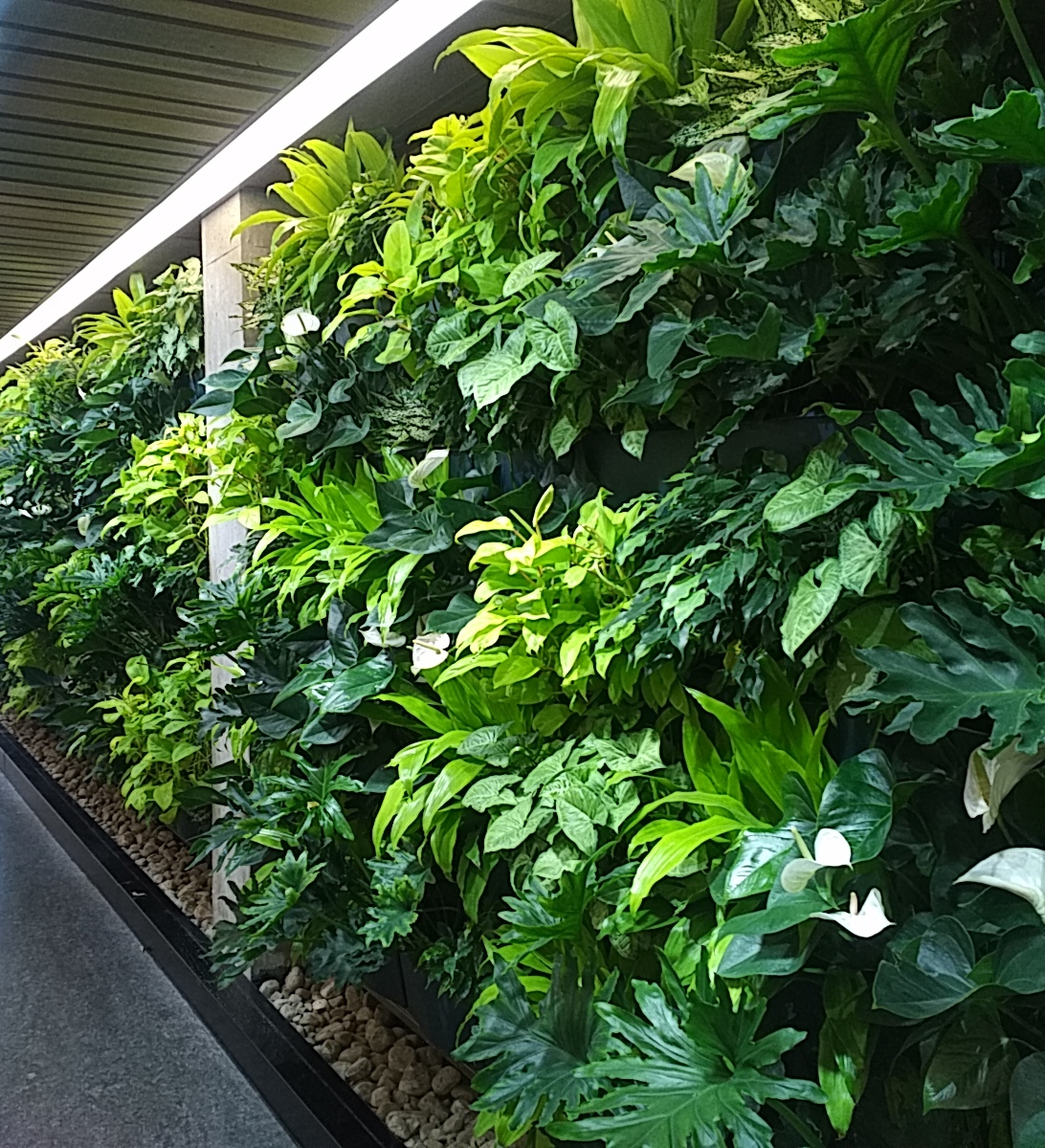
Image: LiveWall
“We preferred a more dynamic design like a natural landscape versus a more controlled design with defined patterns of color as in a formal garden,” said Strain. “A natural design is also easier and less expensive to maintain.”
Maintenance Matters
Following LiveWall maintenance guidelines, Ginkgo Sustainability sends out one of its plant specialists to the Bata Library green wall every two weeks.
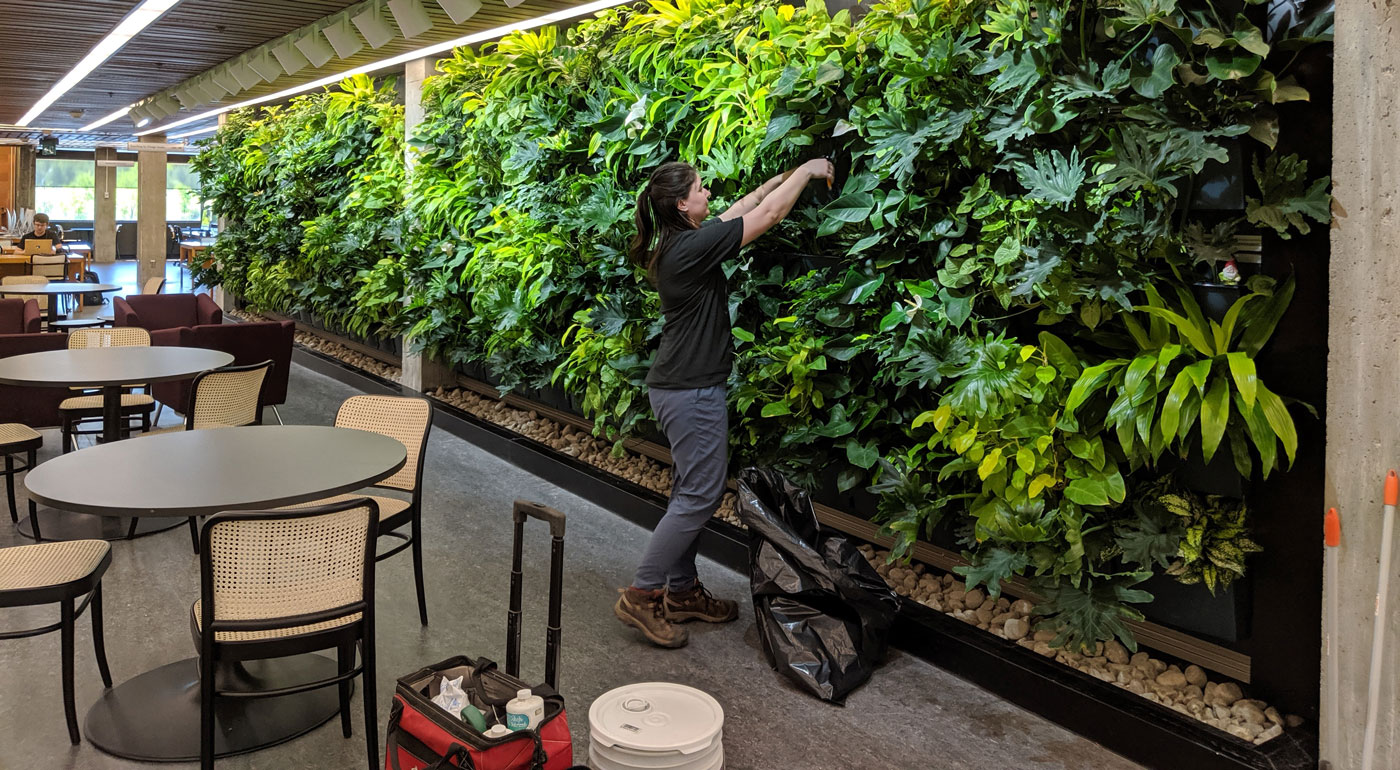
Image: Ginkgo Sustainability/LiveWall
Liston explained that the maintenance routine includes: a visual inspection of the appearance and health of the plants; trimming plants and clearing out any dead leaves and flowers; checking the moisture level of the growing medium and verifying that each row of modular planters are getting sufficient and even amounts of moisture; inspecting mechanical components such as the irrigation controller and fertilization injector; a quick manual run to test the irrigation system; and adjusting the irrigation schedule, as necessary.
After each visit, Ginkgo Sustainability sends a maintenance report to Trent University Facilities Management. The reports, which include several photos, keep them informed on the condition of the living wall.
“We give advance notice of upcoming maintenance visits and make sure there are no events scheduled for the space,” said Liston. “In addition, students who want to talk with our plant experts and learn about the living wall like to know when maintenance is scheduled.”
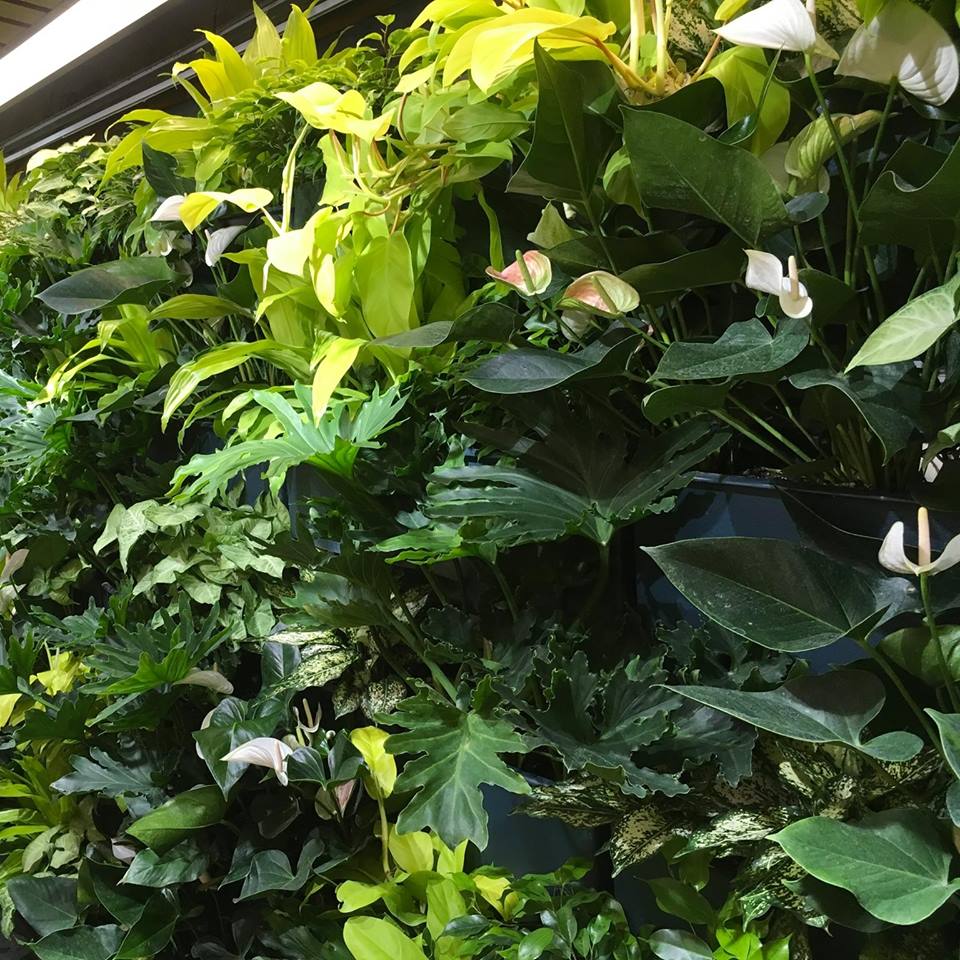
Image: Trent University Facebook
According to Strain, it is important to notify students about scheduled maintenance visits so they have the opportunity to observe, ask questions, and learn about the features, functions and benefits of the green wall.
What is the most common question from students? “They first ask if the plants are real. The living wall looks so lush and so beautiful, they cannot help but wonder. They just have to get up close and touch the plants,” said Strain. “Then they want to know all about how the living wall works both as a design element and as a green infrastructure component.”

Image: LiveWall
~ Amber Poncé and David Aquilina
Publisher’s Note: See the Trent University Bata Library Greenwall Project Profile in the Greenroofs.com Projects Database.
Amber Poncé
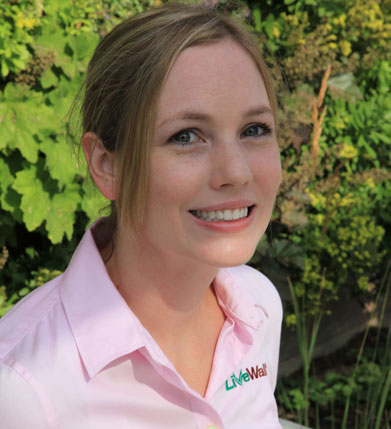
Amber Poncé is the Business Development Manager for LiveRoof® Global, LLC and LiveWall®, LLC. Since 2006, Amber has played a key role in expanding the LiveRoof Global network of professional horticulturists and growers into an industry leading supplier of green roof and green wall systems. She is an accredited Green Roof Professional with more than a decade of experience in green roofing – including experience with growing media formulation, plant selection and production, shipping logistics, and installation and maintenance. Amber has helped develop green roofing industry standards. She currently sits on the green walls committee of Green Roofs for Healthy Cities.
Contact Amber Poncé:
616-935-1964
AmberP@LiveRoof.com
David Aquilina

David Aquilina, Strategic Storyteller, is a public relations consultant and freelance writer. An accomplished, award-winning communications professional, he achieves results that showcase his clients, build and boost their brands, and launch and promote their products and services. A frequent contributor to green industry publications, David makes his home up on the edge of the northern prairie near Minneapolis, Minnesota.
Contact David Aquilina:
612-716-5628
davida@strategicstoryteller.com
 Greenroofs.comConnecting the Planet + Living Architecture
Greenroofs.comConnecting the Planet + Living Architecture
